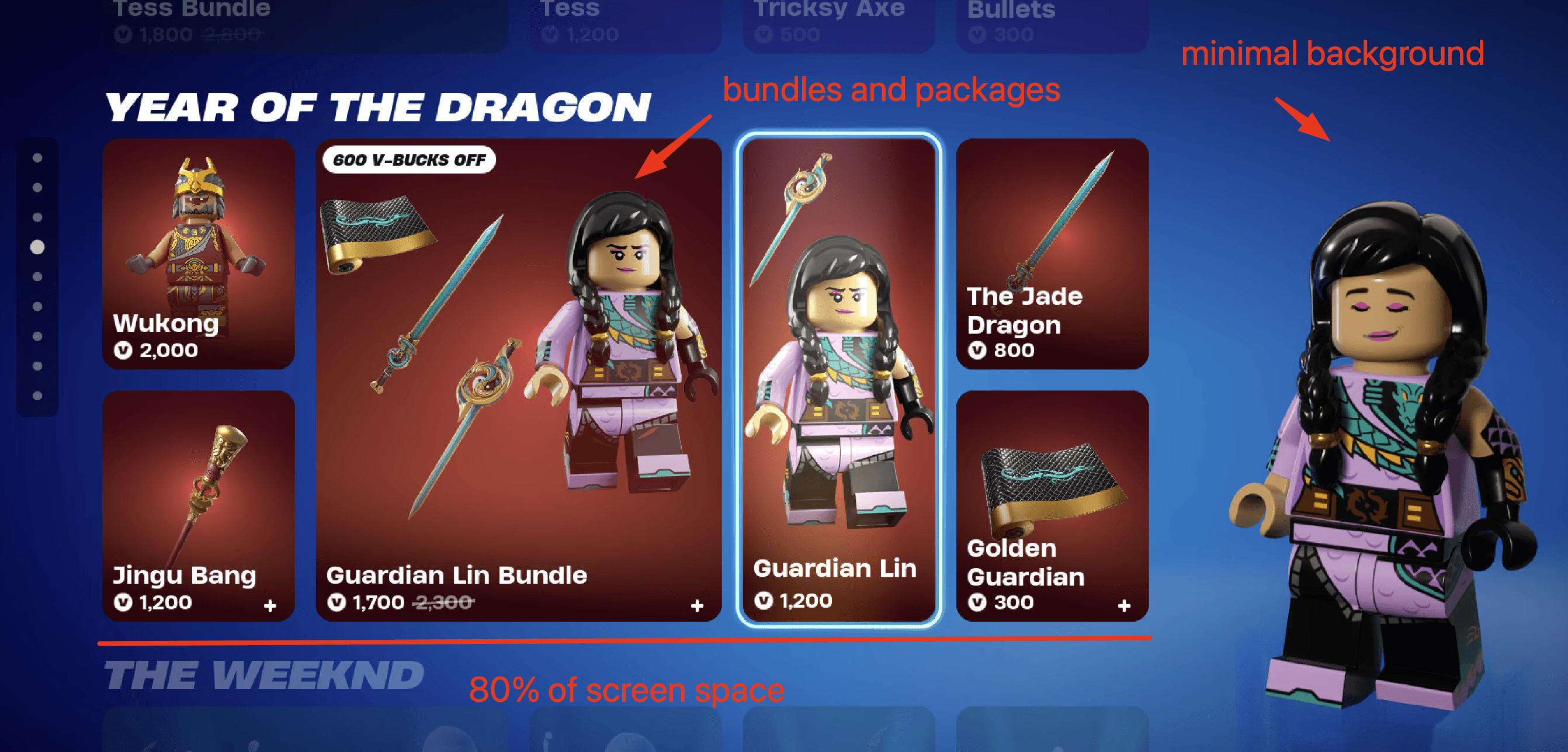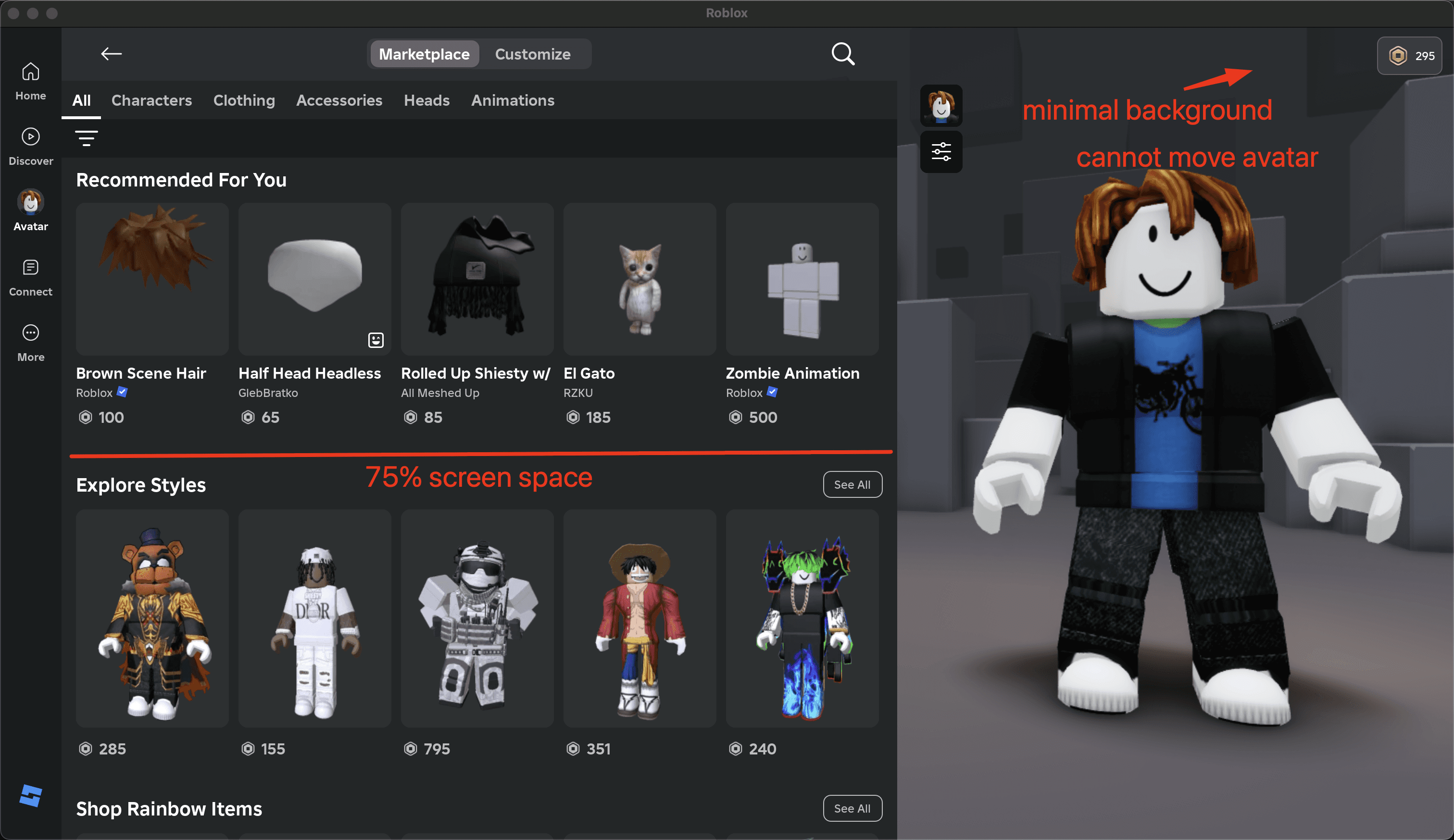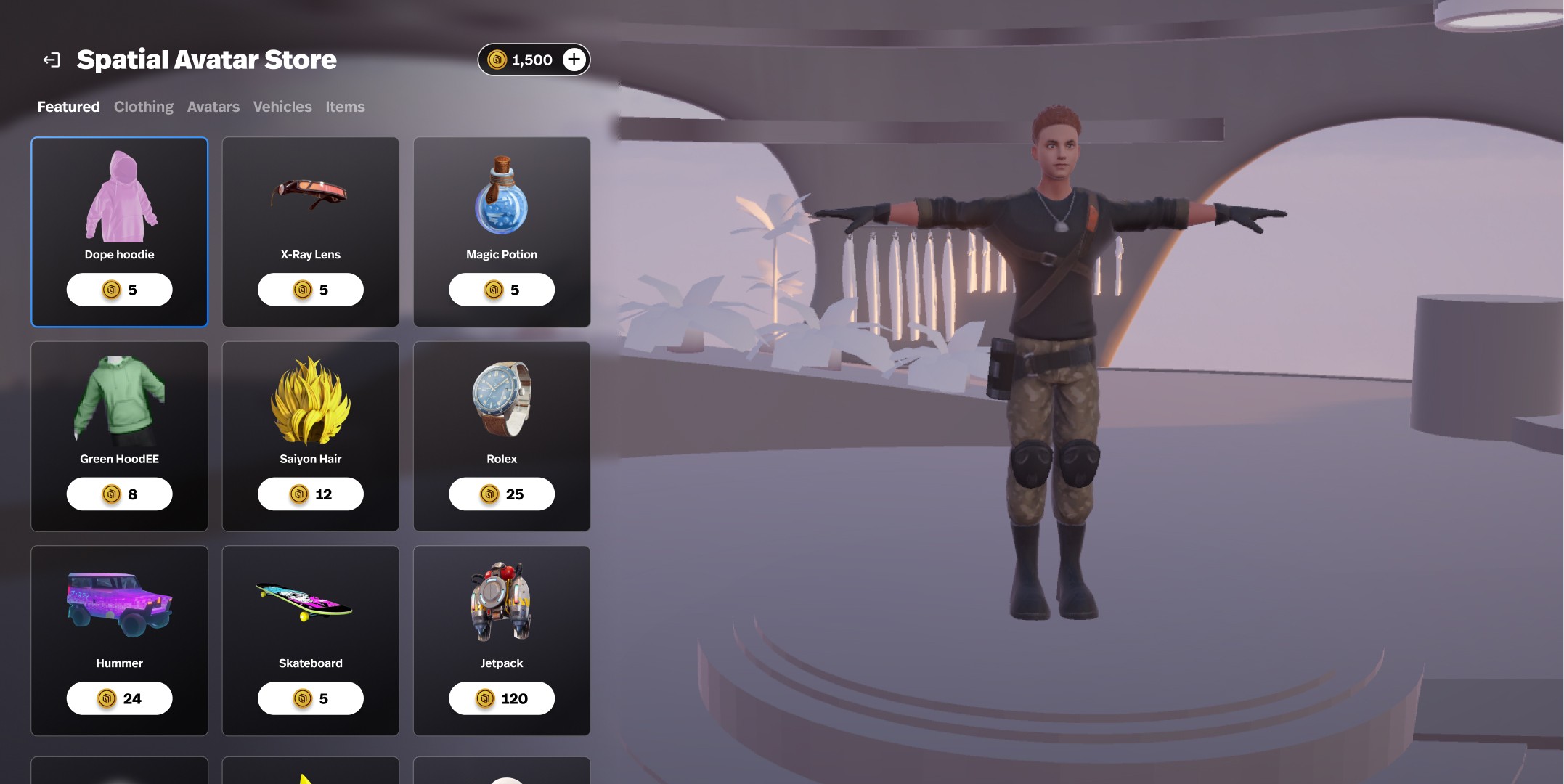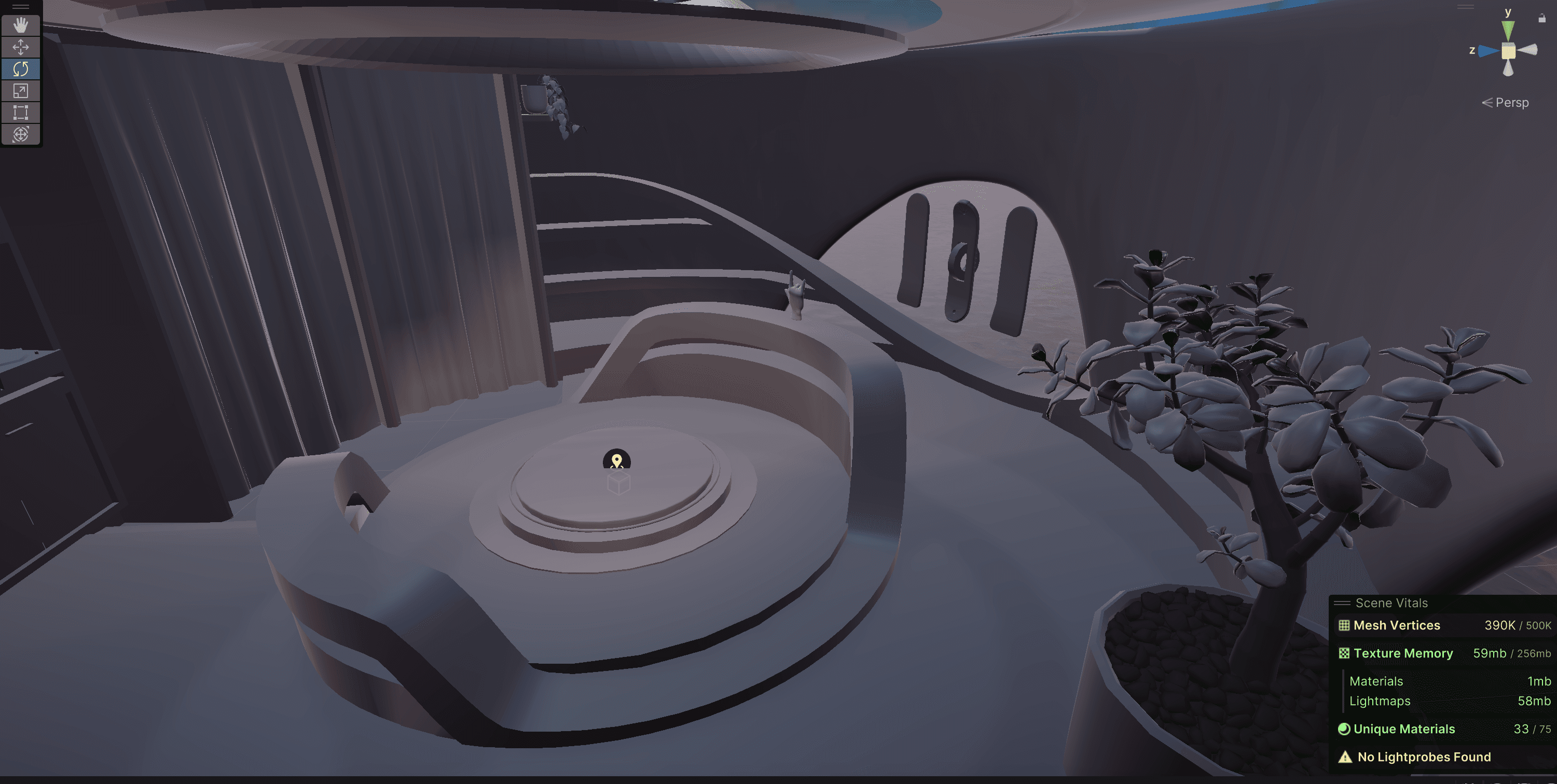Case Study
Design Team Initiative Leads to a 390% Boost in Sales.
Context
Spatial is a platform enabling creators & businesses to quickly build and share 3D digital spaces across web, mobile, & VR.
Description
Due to a steady growth in retention, Spatial is increasing its investment in gaming spaces built with the Unity game engine. However, two key challenges persist: sales for creators remain low, and the product team lacks a deep understanding of their workflows. As a result, creators face significant challenges and lack an empathetic community to support them. To address this, I initiated a project to enhance the design team’s empathy for Unity creators and identify the obstacles hindering their sales.
Los Angeles, CA
COPYRIGHT JAYSon.STUDIO 2024
Case Study
Unlocking 4x in sales after optimizing the Avatar Store
ROLE
Product Designer
TIMELINE
Q3 23' - Q4 24'
COMPANY
Spatial.io
Description
During Q3 2023, we identified a key challenge: the need for more game-centric spaces. In response, we prioritized improving tools for creators to build games, developing in-house games as examples, and updating the homepage to better showcase these offerings for creators and enterprise clients.
Problem
Most Spaces on Spatial are designed for passive viewing, with limited interactivity. Only a few creators have attempted 'mini-games,' a challenging task requiring game engine skills and extensive knowledge of the Spatial Unity toolkit.
Enterprise clients are hesitant to commit to major deals, doubting Spatial's ability to deliver high-quality graphics and immersive experiences.
Solution
Upgrade Spatial's Unity Creator Toolkit to help creators build games faster and easier.
Create games in-house to drive platform traffic and showcase Spatial's capabilities.
Redesign the homepage to emphasize gaming use cases and highlight Spatial as a premium solution.
Impact
3X MAU (6mo)
Case Study
Unlocking 4x in sales after optimizing the Avatar Store
ROLE
Product Designer
TIMELINE
Q3 23' - Q4 24'
COMPANY
Spatial.io
Description
During Q3 2023, we identified a key challenge: the need for more game-centric spaces. In response, we prioritized improving tools for creators to build games, developing in-house games as examples, and updating the homepage to better showcase these offerings for creators and enterprise clients.
Problem
Most Spaces on Spatial are designed for passive viewing, with limited interactivity. Only a few creators have attempted 'mini-games,' a challenging task requiring game engine skills and extensive knowledge of the Spatial Unity toolkit.
Enterprise clients are hesitant to commit to major deals, doubting Spatial's ability to deliver high-quality graphics and immersive experiences.
Solution
Upgrade Spatial's Unity Creator Toolkit to help creators build games faster and easier.
Create games in-house to drive platform traffic and showcase Spatial's capabilities.
Redesign the homepage to emphasize gaming use cases and highlight Spatial as a premium solution.
Impact
3X MAU (6mo)
Case Study
Unlocking 4x in sales after optimizing the Avatar Store
ROLE
Product Designer
TIMELINE
Q3 23' - Q4 24'
COMPANY
Spatial.io
Description
During Q3 2023, we identified a key challenge: the need for more game-centric spaces. In response, we prioritized improving tools for creators to build games, developing in-house games as examples, and updating the homepage to better showcase these offerings for creators and enterprise clients.
Problem
Most Spaces on Spatial are designed for passive viewing, with limited interactivity. Only a few creators have attempted 'mini-games,' a challenging task requiring game engine skills and extensive knowledge of the Spatial Unity toolkit.
Enterprise clients are hesitant to commit to major deals, doubting Spatial's ability to deliver high-quality graphics and immersive experiences.
Solution
Upgrade Spatial's Unity Creator Toolkit to help creators build games faster and easier.
Create games in-house to drive platform traffic and showcase Spatial's capabilities.
Redesign the homepage to emphasize gaming use cases and highlight Spatial as a premium solution.
Impact
3X MAU (6mo)
If you're interested - here is the link to visit the store.
NEVER.STOP.CreaTING
NEVER.STOP.CreaTING
If you're interested - here is the link to visit the store.
NEVER.STOP.CreaTING
NEVER.STOP.CreaTING
If you're interested - here is the link to visit the store.
NEVER.STOP.CreaTING
NEVER.STOP.CreaTING
If you're interested - here is the link to visit the store.
NEVER.STOP.CreaTING
NEVER.STOP.CreaTING
Deep DIve
Pain Point
As Spatial focuses more on Unity game developers, empathy & understanding between creators and the product team widens.
Pain Point
While retention has grown since the
'Spatial Economy' initiative, sales remain very low for most creators.
This could be an great opportunity to demonstrate my leadership skills through an internal initiative
Insight
Goals
Kickstart a project to deepen the design team’s empathy for Unity creators and pinpoint challenges hindering sales.
Open Questions:
When creating a space through Unity - what aspects are the most pain staking?
What skills can the design team develop to better support an increasingly video game-focused company?
How are creators currently selling items, and what factors are contributing to low conversion rates?
What’s the best way to secure team-wide support to move this project into production?
Research
What challenges do our creators face when building spaces, and why are they not converting well to sales?
Audit of current shopping experiences on Spatial against other successful alternative models.

Reference of Fortnite Store Layout

Reference of Roblox Marketplace Layout
Recording of Spatial's current highest-performing shopping experience.

Reference of Fortnite Store Layout

Reference of Roblox Marketplace Layout
Recording of Spatial's current highest-performing shopping experience.

Reference of Fortnite Store Layout

Reference of Roblox Marketplace Layout
Recording of Spatial's current highest-performing shopping experience.

Reference of Fortnite Store Layout

Reference of Roblox Marketplace Layout
Recording of Spatial's current highest-performing shopping experience.
Findings
Spatial
Shopping experiences often require users to run from item to item in 3D space. While this provides a unique shopping experience - it is inefficient for rapid item discovery and quick sales conversion.
Roblox
The marketplace primarily focuses on individual items, with secondary emphasis on their relationship to the avatar. Additionally, the minimal background and lack of free navigation for the avatar further concentrate the user on shopping rather than space discovery.
*Insight* Marketplace only sells "global" items (items that can be used across all experiences — not just one.
Fortnite
Similar to Roblox in structure and biasing toward highlighting items.
Similar to Roblox, Fortnite's store only sells "global" items. *Insight*
Unlike Roblox, Fortnite is heavily biased towards item "bundles" rather than individual items.
Development
Increase sales by limiting space navigation and increasing focus on (global) item discovery.
Optimizing the current Spatial shopping experience to better reflect Roblox and Fortnite.
Development (Low to High Fidelity)

Texturing, lighting, and game development all occurred within Unity game engine.

Initial Specs developed in Figma
Animation created by Yoonwoo Lee to inform art direction and interactive design before production.

Initial Greyboxing of the 3D space to better understand spacing, positioning, and Ui layout.

Revised architecture after initial grey box feedback.

Texturing, lighting, and game development all occurred within Unity game engine.

Initial Specs developed in Figma
Animation created by Yoonwoo Lee to inform art direction and interactive design before production.

Initial Greyboxing of the 3D space to better understand spacing, positioning, and Ui layout.

Revised architecture after initial grey box feedback.

Texturing, lighting, and game development all occurred within Unity game engine.

Initial Specs developed in Figma
Animation created by Yoonwoo Lee to inform art direction and interactive design before production.

Initial Greyboxing of the 3D space to better understand spacing, positioning, and Ui layout.

Revised architecture after initial grey box feedback.

Texturing, lighting, and game development all occurred within Unity game engine.

Initial Specs developed in Figma
Animation created by Yoonwoo Lee to inform art direction and interactive design before production.

Initial Greyboxing of the 3D space to better understand spacing, positioning, and Ui layout.

Revised architecture after initial grey box feedback.
Playtesting Feedback
90%
"What am I supposed to do when entering?"
Focus on the user's attention by auto-prompting the store when entering the space.
70%
"These items are not worth the money."
Introduce tiered pricing to help users compare assets relative to each other vs comparing items relative to external assets.
50%
"I wish there were categories"
Introduced categories and bundles following POC deployment to production.
Proof of Concept
The initial concept built by the design team and pitched to the team at large.
NEVER.STOP.CreaTING
NEVER.STOP.CreaTING
Impact
How did this project lead to a real impact?
Prod
Initiative gets implemented into production
390%
Sales revenue exceeds the average revenue per space.
200%
Sales revenue exceeds other Spatial monetization initiatives.
Takeaways
Stakeholder buy-in increases as you emphasize the value the project brings to them, specifically.
Ensure the brief (problem & goals) is prominently surfaced near assigned tasks to increase visibility and reference.
Even in a lead role, seeking support is essential. Regular consultations with game developers and other PMs would have provided valuable insight into project timelines.
There seems to be a strong correlation between an items value and it's ability to be "shown off" to others.




